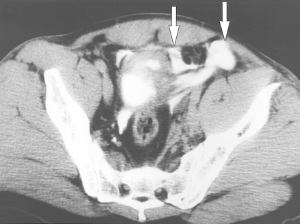Thanks to all who tweeted, commented and emailed their suggestions! The case involves a partially ejected patient who is brought to the ED with respiratory distress and diminished lung sounds on the left.
Sounds easy, right? But remember, this is the Trauma Professional’s Blog! I want you to be prepared for things that are a little outside the ordinary. No zebras here, but stuff you could actually see.
First, every trauma activation patient gets supplemental oxygen as the festivities continue. You need to quickly figure out if this is an airway, breathing, or circulation problem. Yes, circulation. Major torso vascular injuries and tamponade can cause respiratory distress. However, we would not expect the blood pressure to be anywhere near normal.
So check the airway to make sure there is no foreign material there. Check the trachea for position. This is one of those classic test results in medicine: if the trachea is deviated, they most likely have a tension pneumothorax. But if it’s not, that doesn’t necessarily mean they don’t. In this case, the trachea is in its usual place, but don’t count tension physiology out yet.
Double check the breath sounds. You confirm that they are nearly absent on the left. What to do next?
You must presume some major problem on the left: large hemo- or pneumothorax, or a tension pneumothorax. Since your patient is physiologically abnormal, you cannot wait to get a chest x-ray. You have to deal with the breathing problem right away. The correct answer is to needle the left chest, then follow immediately with a chest tube.
You do so, and both procedures go smoothly. The chest tube fogs with exhalation, and there is a small amount of blood (100cc) that drains into the collection system. But your patient does not look or feel any better! Oxygen saturations are still in the low 80′s, and he remains dyspneic. As you were finishing the chest tube, the radiology tech snapped a quick chest x-ray, and the result will be up in two minutes.
Now what? Your choices are:
- Intubate
- Insert another chest tube
- Package the patient and run to the OR
- Wait for the chest x-ray
Again, tweet, comment or email. What is wrong, and why didn’t the chest tube work? What is the ideal next move? Answer tomorrow.



